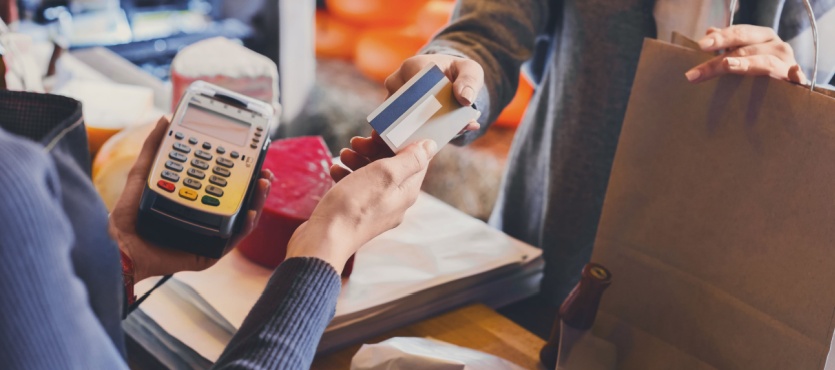In the world of retail, first impressions are everything. The layout, lighting, color schemes, and overall design of a retail space can significantly influence how customers feel, move, and ultimately—whether or not they make a purchase. A well-designed space can keep shoppers engaged longer, highlight key products, and create a seamless experience that reflects the brand and encourages spending. Understanding how design choices affect behavior is essential for any retailer looking to optimize their space and increase sales. Today we’ll explore the psychological and practical elements of retail space design that directly impact customer behavior.
The Psychology of Layout and Flow
The layout of a retail store can guide a customer’s journey from the entrance to checkout. Strategic layouts encourage exploration, reduce friction, and ensure that high-margin products are noticed. Most stores position featured items or displays on the right side of the entrance, based on the natural tendency of most people to turn right when entering a space.
Designing a clear and intuitive path through the store increases the likelihood that customers will pass by more products. Techniques like the “racetrack” layout, which leads shoppers around the perimeter before moving inward, can increase exposure to merchandise. Creating focal points or “speed bumps” using eye-catching displays or unique shelving can slow down foot traffic and draw attention to specific products.
Lighting as a Sales Tool
Lighting does more than just brighten a room—it sets the mood, highlights key products, and guides customer attention. Bright, even lighting in general areas helps customers feel comfortable navigating the space, while spotlighting or accent lighting can make specific items stand out.
Warm lighting tends to create a welcoming, intimate atmosphere, which can be effective in boutique settings, while cooler tones may work well in technology or modern apparel stores. Backlighting behind shelves, under-cabinet lighting, and illuminated signage can all contribute to a more dynamic and appealing shopping environment. Proper lighting not only enhances the aesthetic of the store but also increases the visibility of products, making it easier for customers to find what they want and feel confident in their purchase.
Strategic Product Placement
Product placement plays a significant role in influencing buying behavior. High-demand or premium products are often placed at eye level to ensure they’re noticed first. Impulse items, such as small accessories or add-ons, are commonly positioned near the checkout to encourage last-minute purchases.
Cross-merchandising—placing related items together—can also boost sales. For instance, pairing kitchen gadgets with recipe books or arranging shoes next to handbags creates a cohesive shopping experience and encourages additional purchases. The goal is to make it easy and intuitive for customers to discover products that complement one another.
Color and Branding Influence Mood
Color is a powerful visual tool that can affect mood and perception. Warm colors like red, orange, and yellow can create a sense of urgency or excitement and are often used in clearance areas or promotional signage. Cool colors such as blue and green are more calming and are often used in areas where you want customers to linger.
Color also reinforces branding. A store’s interior should reflect the brand’s identity through consistent color palettes and material choices. When a customer walks into a store, the color scheme, decor, and layout should immediately convey the tone and personality of the business—whether it’s luxury, fun, wellness, or innovation.
Sensory Design and Customer Engagement
Retail design increasingly incorporates sensory elements to elevate the customer experience. Soft background music, subtle scents, and interactive product displays can create a multi-sensory shopping environment that keeps customers engaged and relaxed. Research has shown that pleasant scents and music can increase the time a customer spends in a store, which correlates with higher purchase rates.
Interactive displays, digital screens, or product demos offer tactile and engaging experiences that go beyond simple browsing. The more senses a store can appeal to, the more likely a customer will form a positive memory of the experience—and return.
Designing for Comfort and Accessibility
Comfort plays a subtle but important role in how long customers stay. Spacious aisles, comfortable temperature settings, and seating areas create an inviting atmosphere. Shoppers are more likely to stay and explore when they aren’t feeling rushed, crowded, or physically uncomfortable.
Accessibility is also crucial—not only for legal compliance but for improving the customer experience. Clear signage, uncluttered layouts, and pathways that accommodate all individuals, including those with mobility needs, show that the store values every shopper.
Design That Drives Results
Retail space design isn’t just about aesthetics—it’s about strategy. Every design choice, from lighting and layout to color and product placement, impacts how customers behave and how likely they are to make a purchase. A well-designed retail space can guide foot traffic, encourage discovery, build brand identity, and ultimately boost sales.
For retailers ready to transform their space into a high-performing sales environment, working with experienced professionals is key. Perillo Construction understands how to translate a brand’s identity into physical design while incorporating smart, customer-focused strategies. To learn more about how we can help elevate your retail space, visit Perillo Construction’s Contact Us page.

